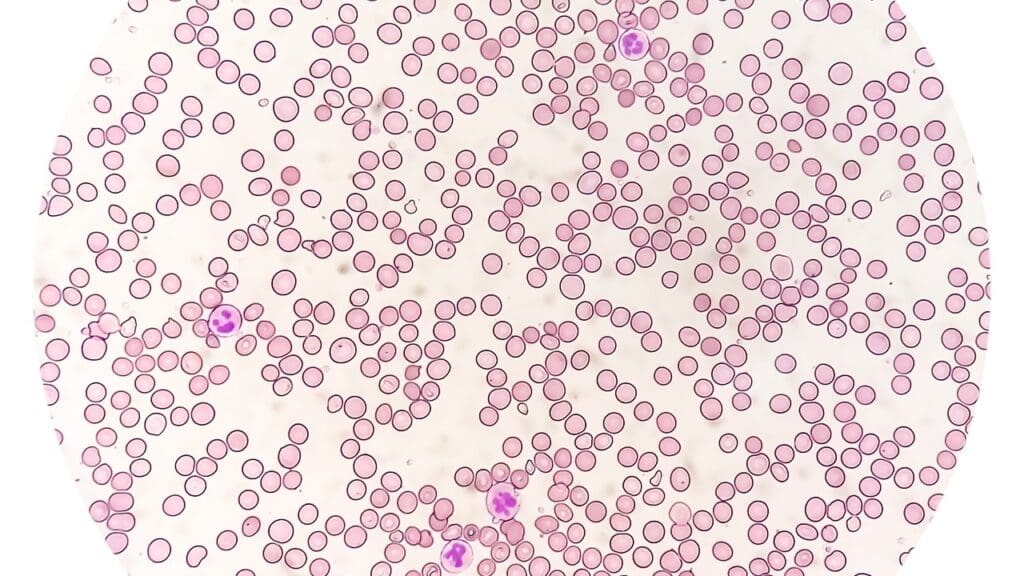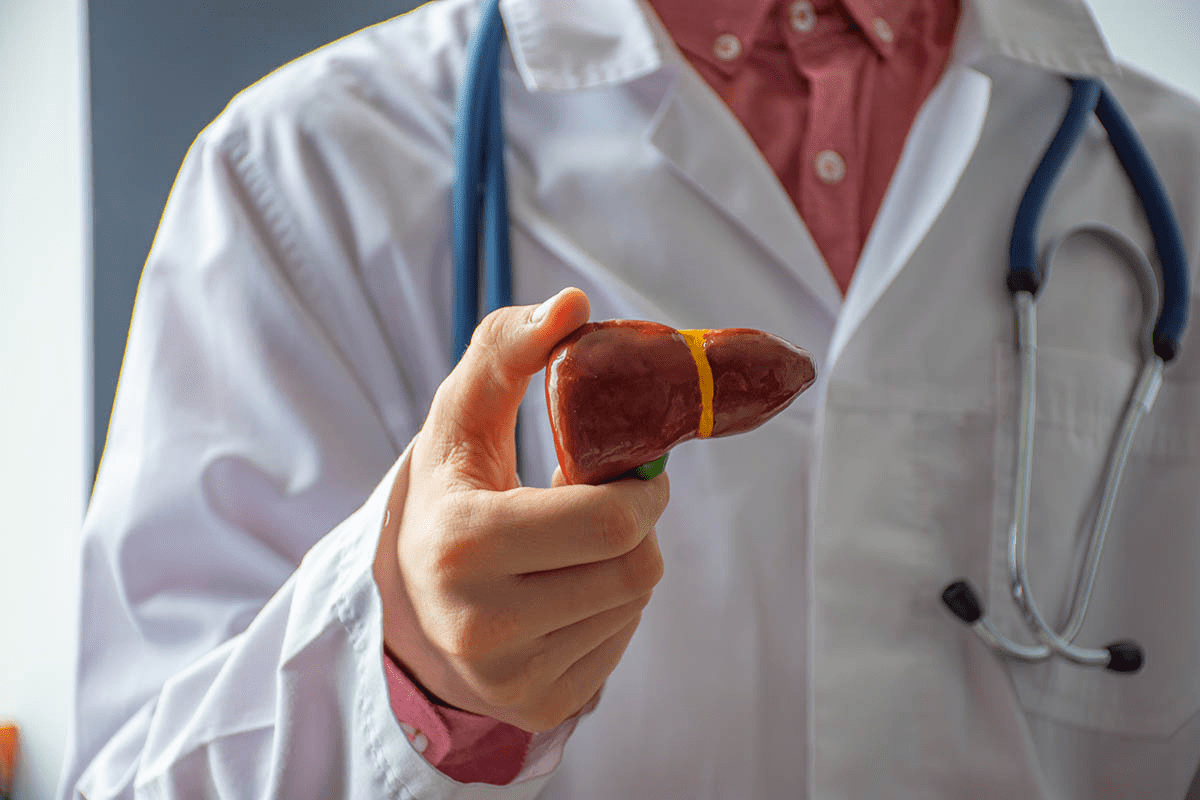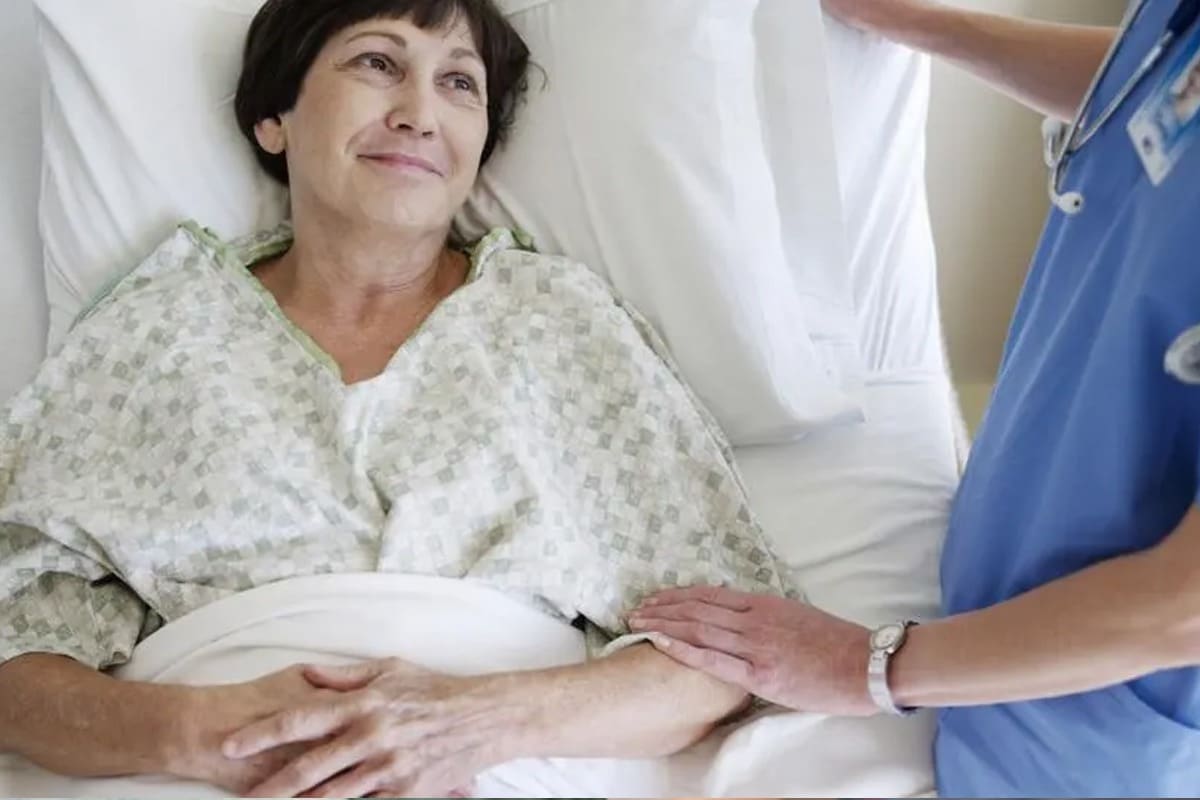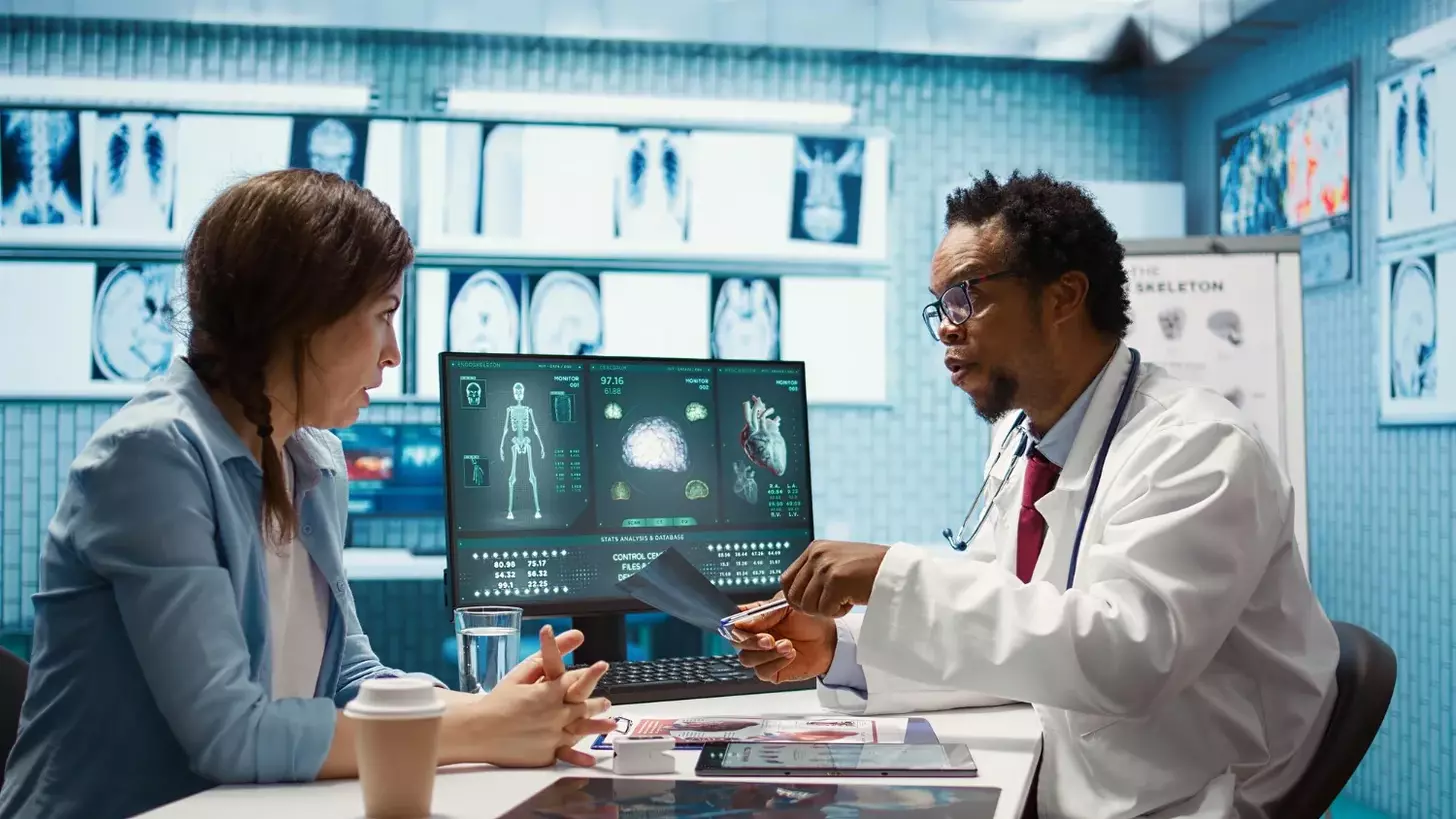Last Updated on November 27, 2025 by Bilal Hasdemir
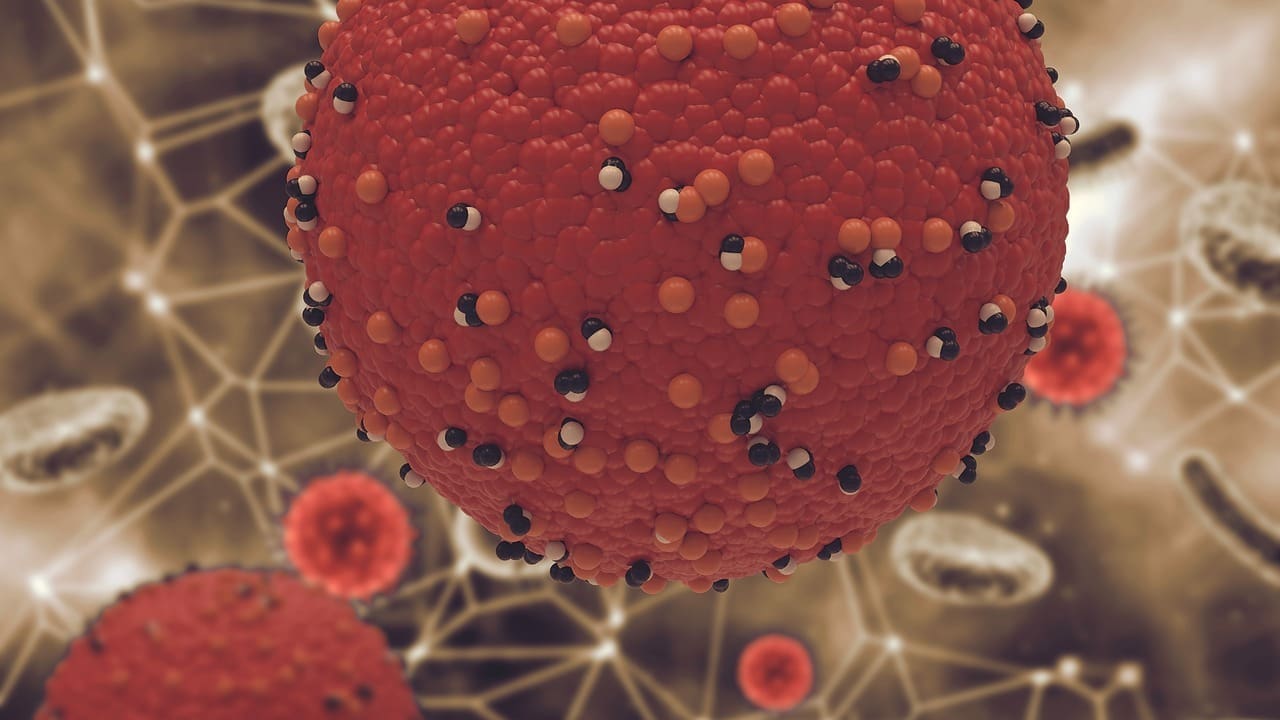
Getting a diagnosis of DLBCL stage 4 can feel scary. But knowing about it is the first step to managing it well. At Liv Hospital, we focus on you, guiding you from the first symptoms to getting better.
DLBCL stage 4 means the cancer has spread beyond the lymph nodes. It’s important to understand the symptoms, stages, and treatment options. Our article will cover the essential facts about this condition. We’ll talk about how it’s diagnosed, including staging tests and biomarker tests, and what treatments are available.
Key Takeaways
- Understanding DLBCL stage 4 is key to managing it well.
- Diagnostic tests include imaging, blood tests, and bone marrow biopsy.
- Treatment options depend on the stage and patient health.
- Patient-centered care is vital for the treatment journey.
- Being informed helps patients make better care decisions.
Understanding Diffuse Large B Cell Lymphoma (DLBCL)
DLBCL is a common and aggressive type of non-Hodgkin lymphoma. It affects the B cells in the lymphatic system. We will cover what DLBCL is, its types, and risk factors. This will give you a full picture of this complex disease.
What is DLBCL?
Diffuse Large B Cell Lymphoma (DLBCL) starts from B cells in the lymphatic system. It grows quickly and is aggressive. DLBCL is the most common subtype of non-Hodgkin lymphoma, making up about 30% of all lymphoma cases worldwide. It can happen anywhere in the body where lymphoid tissue is found, like lymph nodes or the spleen.
Types of DLBCL
DLBCL is not just one thing but a group of lymphomas with different features. The main types are:
- Germinal Center B-cell-like (GCB) DLBCL: This type has a better outlook and is linked to certain genetic changes.
- Activated B-cell-like (ABC) DLBCL: ABC DLBCL has a worse outlook than GCB and is linked to different genetic changes.
- Double-hit or triple-hit lymphomas: These are very aggressive forms of DLBCL with poor outlooks due to specific genetic changes.
Knowing the exact type of DLBCL is key to choosing the right treatment.
Risk Factors and Causes
The exact cause of DLBCL is not known, but some risk factors have been found. These include:
| Risk Factor | Description |
|---|---|
| Age | The risk of getting DLBCL goes up with age, mostly in people over 60. |
| Immunosuppression | People with weakened immune systems, like those with HIV/AIDS or on immunosuppressive therapy, are at higher risk. |
| Autoimmune Diseases | Certain autoimmune conditions, like rheumatoid arthritis, may raise the risk of DLBCL. |
| Genetic Predisposition | A family history of lymphoma may increase the risk, though specific genetic markers are being researched. |
“Knowing the risk factors and causes of DLBCL is key for early detection and treatment.”
By understanding DLBCL, we can see how complex it is. This helps us see why personalized treatments are needed.
The Staging System for Diffuse Large B Cell Lymphoma
Getting the right stage for Diffuse Large B Cell Lymphoma is key. It helps predict how well a patient will do and what treatment to use. The stage shows how far the cancer has spread, which is vital for planning treatment.
How Lymphoma Staging Works
Lymphoma staging checks how far cancer has spread in the body. Doctors use CT scans, PET scans, and bone marrow biopsies for this. These tests help figure out the disease’s stage, which guides treatment.
The Ann Arbor Staging System is often used for lymphoma. It divides lymphoma into four stages based on how far the cancer has spread:
- Stage I: Cancer is in one lymph node group or organ.
- Stage II: Cancer is in two or more lymph node groups on the same side of the diaphragm.
- Stage III: Cancer is in lymph node groups on both sides of the diaphragm.
- Stage IV: Cancer has spread to organs like the liver, bone marrow, or lungs.
Stage 1 and Stage 2 B Cell Lymphoma
Stage 1 and Stage 2 B cell lymphoma are early stages. The cancer is usually in one or more lymph node groups. Symptoms might be mild or not there at all. Treatment often includes chemotherapy, radiation, or both.
For the latest on research and treatments, check out studies in Frontiers in Oncology.
Stage 3 Large B Cell Lymphoma
Stage 3 large B cell lymphoma means cancer has spread to both sides of the diaphragm. This is a more serious stage. Treatment usually involves stronger chemotherapy.
Differences Between Early and Advanced Stages
The big difference between early and advanced DLBCL is how far the cancer has spread. Early stages are more localized, while advanced stages have spread to many areas. Knowing this helps choose the best treatment.
In summary, the staging system for DLBCL is very important. It tells us how far the cancer has spread, helping decide treatment and predict outcomes. Understanding DLBCL stages helps patients and doctors plan effective treatments together.
Diffuse Large B Cell Lymphoma Stage 4: What It Means
Stage 4 DLBCL is a serious stage of cancer. It has spread to organs beyond the lymph nodes. This makes it a systemic disease, affecting the whole body.
Organs Commonly Affected
In stage 4 DLBCL, cancer often goes to the liver, bone marrow, lungs, or the gastrointestinal tract. This can really affect a patient’s health and treatment plan.
Liver involvement can cause liver function test issues. Bone marrow involvement can lead to blood cell production problems. Knowing which organs are affected is key to finding the right treatment.
Bone Marrow Involvement
Bone marrow involvement is a big deal in stage 4 DLBCL. When lymphoma gets into the bone marrow, it can mess with blood cell production. This can cause anemia, neutropenia, and thrombocytopenia.
Doctors can find lymphoma cells in the bone marrow through biopsy and aspiration. This info is important for staging and treatment planning.
Extranodal Disease Characteristics
Extranodal disease means cancer is in organs or tissues outside the lymphatic system. In stage 4 DLBCL, this is common. It can show up in different ways, depending on the organs involved.
For example, if the gastrointestinal tract is involved, it might cause abdominal pain or changes in bowel habits. Knowing about extranodal disease is key to managing symptoms and finding effective treatments.
Distinguishing Stage 4 from Earlier Stages
Stage 4 DLBCL is different from earlier stages because of how far the disease has spread. Unlike stages 1 or 2, which are more localized, stage 4 has spread to distant organs or tissues.
| Stage | Disease Extent | Common Characteristics |
|---|---|---|
| Stage 1 | Localized to one lymph node group | Often treated with localized therapies |
| Stage 2 | Involves two or more lymph node groups on the same side of the diaphragm | May require systemic treatment if bulky disease is present |
| Stage 4 | Disseminated to distant organs or tissues beyond lymph nodes | Involves multi-organ involvement, requiring systemic treatment |
Understanding these differences is important for both patients and healthcare providers. It helps make informed decisions about treatment and care.
Stage 4 Diffuse Large B-Cell Lymphoma Symptoms
Knowing the symptoms of stage 4 diffuse large B-cell lymphoma (DLBCL) is key. It helps patients understand their disease’s progress. We’ll cover the common symptoms, like systemic signs, B symptoms, and organ-related issues.
Common Systemic Symptoms
Systemic symptoms affect the whole body. In stage 4 DLBCL, patients might feel:
- Fatigue: Feeling extremely tired or weak
- Malaise: A general feeling of being unwell
- Loss of appetite: Reduced interest in food
B Symptoms: Fever, Night Sweats, and Weight Loss
B symptoms show a more serious disease. They include:
- Fever: Elevated body temperature
- Night sweats: Recurring episodes of drenching sweats at night
- Weight loss: Unintentional loss of a significant amount of body weight
These symptoms can really affect a patient’s life. They might need special care.
Organ-Specific Symptoms
DLBCL in stage 4 can harm different organs. This leads to specific symptoms. For example:
- Liver involvement: Jaundice (yellowing of the skin and eyes), abdominal swelling
- Bone involvement: Bone pain, fractures
- Lung involvement: Cough, difficulty breathing
When to Seek Medical Attention
Patients should see a doctor if they notice:
- Severe or worsening symptoms
- Difficulty breathing or chest pain
- Severe abdominal pain or swelling
- Significant weight loss or loss of appetite
Spotting symptoms early helps doctors manage the disease better.
Diagnosing Stage 4 DLBCL
Diagnosing Stage 4 DLBCL is a detailed process. It involves clinical checks and advanced tests. We’ll walk you through the steps to diagnose this condition.
Initial Assessment and Physical Examination
The first step is a detailed medical history and physical check. We look for signs like swollen lymph nodes, fever, or weight loss. This helps us understand how far the disease has spread and what tests to do next.
Biopsy Procedures
A biopsy is key to diagnosing DLBCL. We take a tissue sample from a lymph node or organ. There are different biopsy methods, such as:
- Excisional biopsy: Removing an entire lymph node or tumor
- Core needle biopsy: Using a needle to extract a tissue sample
- Fine-needle aspiration biopsy: Using a thin needle to collect cells
The right biopsy method depends on the tumor’s location and size, and the patient’s health.
Imaging Studies for Staging
Imaging studies are vital for staging DLBCL. We use different techniques, like:
- Computed Tomography (CT) scans: To check tumor size and location
- Positron Emission Tomography (PET) scans: To see how active tumors are
- Magnetic Resonance Imaging (MRI): To look at specific areas, like the brain or spine
These studies help us accurately stage the disease and plan treatment.
Laboratory Tests and Biomarkers
Laboratory tests are critical for diagnosing and staging DLBCL. We do various tests, including:
- Blood tests: To check blood cell counts and look for abnormalities
- Lactate Dehydrogenase (LDH) test: To see if LDH levels are high, which can be a sign of DLBCL
- Immunohistochemistry: To study the tissue sample for specific proteins and markers
These tests and biomarkers give us important information. They help us tailor treatment to each patient’s needs.
Standard Treatment Approaches for DLBCL Stage 4
The treatment for stage 4 DLBCL is complex. It includes chemotherapy like R-CHOP, radiation therapy, and managing side effects. We will look at these treatments in more detail.
R-CHOP Chemotherapy Regimen
R-CHOP is a common treatment for DLBCL. It combines Rituximab with Cyclophosphamide, Hydroxydaunorubicin, Oncovin, and Prednisone. This combination targets cancer cells well, helping many patients live longer.
We give R-CHOP in cycles, every 21 days. This lets normal cells recover. The number of cycles depends on how well the patient responds and their health.
Radiation Therapy Applications
Chemotherapy is the main treatment for stage 4 DLBCL. Radiation therapy is key for managing symptoms and disease. It helps with pain, reduces tumor size, and addresses other issues.
We often pair radiation therapy with chemotherapy. We customize the treatment to fit each patient’s needs and disease.
Treatment Duration and Cycles
Treatment for stage 4 DLBCL lasts from 3 to 6 cycles of R-CHOP. Each cycle is about 21 days, with breaks in between. This allows the body to rest.
We regularly check on patients during treatment. This helps us adjust the plan for the best results.
Managing Side Effects During Treatment
Managing side effects is key in DLBCL treatment. We work with patients to lessen the effects of chemotherapy and radiation. This improves their quality of life.
Side effects include fatigue, nausea, hair loss, and infection risk. We use anti-nausea meds and growth factors to help. This way, we tailor treatment to each patient’s needs and closely watch their response.
Advanced Treatment Options for Refractory Cases
For those with refractory DLBCL, new hope is on the horizon. When usual treatments don’t work, new therapies offer hope. We’ll look at the latest in treating DLBCL, like stem cell transplants, CAR T-cell therapy, and more.
Stem Cell Transplantation Procedures
Stem cell transplants can cure some patients with DLBCL. This method replaces bad stem cells with good ones. It helps the immune system start over.
There are two types: using your own stem cells or someone else’s. Autologous stem cell transplantation is often used for DLBCL. It’s safer because it lowers the risk of bad reactions.
The process starts with getting stem cells from your blood or bone marrow. Then, you get high-dose chemotherapy and the stem cells are put back in. This treatment needs careful planning and watching because of possible side effects.
CAR T-Cell Therapy Breakthroughs
CAR T-cell therapy is a big step forward in treating DLBCL. It takes T-cells from you, changes them to find cancer, and puts them back in. CAR T-cell therapy works well for those who’ve tried many treatments.
It involves several steps, like collecting, changing, and growing T-cells, then putting them back in. You might feel sick or have brain problems, but it’s a promising option.
Targeted Therapies and Immunotherapies
Targeted and immunotherapies are changing how we treat DLBCL. They focus on specific parts of cancer cells. For example, rituximab targets B cells, and other drugs target cancer growth.
- Monoclonal antibodies
- Checkpoint inhibitors
- Antibody-drug conjugates
These treatments can be used alone or with chemotherapy. They offer more tailored options for patients with DLBCL.
Promising Clinical Trials and Research
New clinical trials are looking into better treatments for DLBCL. These studies help us understand the disease better. They’re exploring new ways to fight cancer.
Joining clinical trials can give patients access to new treatments. It also helps us learn more about DLBCL and find better treatments for the future.
Prognosis and Survival Rates for Stage 4 Diffuse Large B-Cell Lymphoma
Patients with Stage 4 DLBCL often want to know about their chances of survival. Knowing the prognosis helps them make better treatment choices.
5-Year Survival Statistics
Thanks to new treatments, the 5-year survival rate for Stage 4 DLBCL has gone up. Now, it’s between 55% and 58%.
Prognostic Factors Affecting Outcomes
Several things can change a Stage 4 DLBCL patient’s outlook. These include age, health, B symptoms, and the lymphoma’s genetics.
Comparison with Stage 2 and Stage 3 Outcomes
DLBCL stages have different survival rates. Earlier stages, like Stage 2 and 3, tend to have better chances than Stage 4.
| Stage | 5-Year Survival Rate |
|---|---|
| Stage 2 | 70-80% |
| Stage 3 | 60-70% |
| Stage 4 | 55-58% |
Factors That Improve Prognosis
Early detection and the right treatment can help. A healthy lifestyle and clinical trials also play a role.
Living with Stage 4 DLBCL
Getting a Stage 4 DLBCL diagnosis can be tough. But, with the right support and care, patients can handle it well. It’s not just about medical treatment. It’s about making lifestyle changes and getting emotional support too.
Coping Strategies During Treatment
Dealing with Stage 4 DLBCL during treatment is hard. It’s important to stay close to family and friends. Their support can really help. Doing things that make you happy, like reading or hobbies, can also help with stress.
Keeping track of your treatment, side effects, and worries is key. This info is helpful when talking to doctors.
Supportive Care Resources
Supportive care is key for managing Stage 4 DLBCL. Look into counseling, support groups, and nutrition advice. These can offer emotional support and practical tips for staying healthy.
It’s also good to learn about your condition and treatment options. Talk to your healthcare team about any questions or worries. This ensures you get the best care.
Nutrition and Exercise Recommendations
Eating well and exercising can boost your health during treatment. Eat a balanced diet with lots of fruits, veggies, whole grains, and lean proteins. Drinking plenty of water is also important.
Try gentle exercises like walking or yoga to fight fatigue and boost mood. Always check with your doctor before starting new exercises.
| Nutritional Element | Recommendation |
|---|---|
| Fruits and Vegetables | Include a variety of colors to ensure a range of nutrients |
| Protein | Choose lean proteins like poultry, fish, and legumes |
| Whole Grains | Opt for brown rice, quinoa, and whole-wheat bread |
Follow-up Care and Long-term Monitoring
After treatment, follow-up care is vital. Stick to your follow-up appointments and tell your doctor about any new symptoms. This helps monitor your condition and address any treatment effects.
Long-term care might include regular scans and check-ups. This ensures the lymphoma stays in remission. Be aware of late treatment effects and talk to your doctor about them.
By staying informed and connected with your healthcare team, you can live better even after treatment.
Conclusion
Diffuse Large B-Cell Lymphoma (DLBCL) stage 4 is a complex condition. It needs a deep understanding of its symptoms, stages, and treatments. We’ve looked into DLBCL, from its definition and types to how it’s staged and treated.
DLBCL stage 4 is marked by cancer spreading to many organs or tissues. This often includes the bone marrow, liver, or lungs. It’s key to catch it early and get full care, like chemotherapy, radiation, and support treatments.
Knowing about DLBCL stage 4 is vital for patients and their families. It helps them make better care choices. We aim to help people understand DLBCL stage 4 well, so they can face their treatment with confidence.
The outlook and survival chances for DLBCL stage 4 depend on many things. This includes the patient’s health and how well they respond to treatment. By staying informed and using support resources, people can do better and live better.
FAQ
What is Diffuse Large B-Cell Lymphoma (DLBCL)?
DLBCL is a fast-growing type of non-Hodgkin lymphoma. It affects B cells, which are key to our immune system.
What are the symptoms of stage 4 DLBCL?
Symptoms include fever, night sweats, and weight loss. You might also feel pain or swelling in specific areas, like the abdomen or bones.
How is DLBCL staged?
Doctors use the Ann Arbor Staging System to check how far the disease has spread. They look at lymph nodes, organs, and tissues affected.
What does stage 4 DLBCL mean?
Stage 4 means the lymphoma has spread to organs outside the lymph nodes. This includes places like the liver, bone marrow, or lungs.
What are the treatment options for stage 4 DLBCL?
Treatment often includes chemotherapy, like R-CHOP, and sometimes radiation. For advanced cases, options like stem cell transplantation or CAR T-cell therapy might be considered.
What is the prognosis for stage 4 DLBCL?
The outlook depends on several factors. These include the patient’s health, genetic markers, and how well they respond to treatment. The 5-year survival rate is about 60-70%, but it can vary.
How does stage 4 DLBCL differ from earlier stages?
Stage 4 is more complex because it affects many areas. This makes it harder to treat than earlier stages.
What are the common side effects of DLBCL treatment?
Side effects include fatigue, nausea, hair loss, and a higher risk of infections. Managing these is key to supportive care.
How can patients cope with stage 4 DLBCL?
Patients need medical treatment, supportive care, and lifestyle changes. This includes nutrition, exercise, and psychological support to improve quality of life.
What is the role of supportive care in managing DLBCL?
Supportive care is essential. It helps with physical, emotional, and practical needs. It improves patients’ quality of life during treatment.
Are there any ongoing clinical trials for DLBCL?
Yes, there are trials for new treatments. These include chemotherapy, targeted therapies, immunotherapies, and CAR T-cell therapies. They offer hope for better outcomes.
What is Diffuse Large B-Cell Lymphoma (DLBCL)?
DLBCL is a fast-growing type of non-Hodgkin lymphoma. It affects B cells, which are key to our immune system.
What are the symptoms of stage 4 DLBCL?
Symptoms include fever, night sweats, and weight loss. You might also feel pain or swelling in specific areas, like the abdomen or bones.
How is DLBCL staged?
Doctors use the Ann Arbor Staging System to check how far the disease has spread. They look at lymph nodes, organs, and tissues affected.
What does stage 4 DLBCL mean?
Stage 4 means the lymphoma has spread to organs outside the lymph nodes. This includes places like the liver, bone marrow, or lungs.
What are the treatment options for stage 4 DLBCL?
Treatment often includes chemotherapy, like R-CHOP, and sometimes radiation. For advanced cases, options like stem cell transplantation or CAR T-cell therapy might be considered.
What is the prognosis for stage 4 DLBCL?
The outlook depends on several factors. These include the patient’s health, genetic markers, and how well they respond to treatment. The 5-year survival rate is about 60-70%, but it can vary.
How does stage 4 DLBCL differ from earlier stages?
Stage 4 is more complex because it affects many areas. This makes it harder to treat than earlier stages.
What are the common side effects of DLBCL treatment?
Side effects include fatigue, nausea, hair loss, and a higher risk of infections. Managing these is key to supportive care.
How can patients cope with stage 4 DLBCL?
Patients need medical treatment, supportive care, and lifestyle changes. This includes nutrition, exercise, and psychological support to improve quality of life.
What is the role of supportive care in managing DLBCL?
Supportive care is essential. It helps with physical, emotional, and practical needs. It improves patients’ quality of life during treatment.
Are there any ongoing clinical trials for DLBCL?
Yes, there are trials for new treatments. These include chemotherapy, targeted therapies, immunotherapies, and CAR T-cell therapies. They offer hope for better outcomes.



